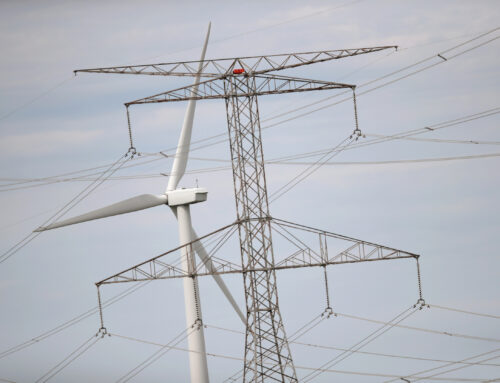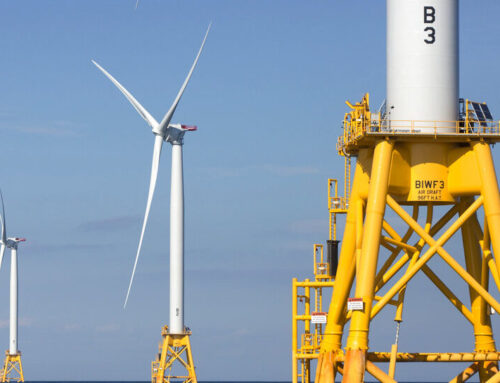Maine has the skilled workers. It needs paths to clean energy jobs. | Opinion
November 5, 2025
Roxanne Heuschkel coordinates Maine’s Clean Energy Partnership Program at Biddeford Adult Education and is completing Yale University’s Financing & Deploying Clean Energy program.
Maria is an electrical engineer from Angola with a bachelor’s degree and years of experience
designing power systems. When she arrived in Maine, she expected her skills would be in
demand. Instead, she found herself rebuilding a life from the ground up — teaching herself local
coding, learning the licensing system and braiding hair on weekends to help cover rent.
She volunteers at church, speaks English fluently and has every credential an employer could want, yet she’s met with roadblocks — licensing barriers, missing guidance and no clear route into the industry.
Maria isn’t alone. Across the state, immigrants, veterans and young adults are eager to fill the
jobs needed to meet Maine’s climate goals. The problem isn’t a lack of talent, it’s that the pathways into clean energy careers are fragmented, underfunded and confusing.
Maine’s Clean Energy Industry Report (2024) found that our clean energy workforce has grown
to 15,600 workers but must double to 30,000 by 2030. That means training the equivalent of
every student in Portland High School every year for the next five years. Without a clearer plan
in sight, we are destined to fall short.
My work in Maine’s Clean Energy Partnership program has highlighted the challenges created by short-term funding cycles. Many promising programs, including adult education courses and employer pre-apprenticeships, disappear when grants expire. Employers lose confidence. Students lose momentum. And Maine continues to watch the clock ticking to meet its climate transition goals.
To address this, the Maine Department of Energy Resources could consider three linked
reforms: long-term workforce planning, workforce-tied financing and a clean energy workforce
trust fund. These are not abstract bureaucratic ideas; they are the foundation for an inclusive,
stable energy transition.
The implementation of a 10-year Clean Energy Workforce Plan aligned with renewable energy
procurements should be required. Other states, such as New York and Colorado, already plan
workforce needs in tandem with their climate targets. Doing the same here would give
employers the predictability to hire and train with confidence.
Efficiency Maine, the state’s Green Bank, and its procurement partners should tie financing to
workforce outcomes, rewarding projects that create apprenticeships and train local workers. Every public dollar invested in clean energy should also invest in its human capacity.
Creating a Clean Energy Workforce Trust Fund, modeled on Massachusetts’ successful
Renewable Energy Trust, would ensure stable, recurring support for training providers.
A modest systems-benefit charge on electricity bills could finance it, blending state and federal
funds. Securing new revenue streams isn’t easy in a less populous state, but the cost of inaction
is greater — unfilled jobs, lost federal funding and stalled climate progress.
Together, these reforms would link the climate and workforce systems that now operate in silos.
They would also fulfill one of Maine Won’t Wait’s (2024 update) essential promises: to make the
clean-energy transition both equitable and durable.
That’s where energy justice comes in. As defined in the Energy Justice Workbook (Energy
Justice Initiative, 2019), energy justice means ensuring that those historically excluded from the
energy system can share in both its burdens and benefits. In Maine, that means reaching rural
residents facing high energy costs, and new Mainers, like Maria, who bring global expertise yet
face structural barriers to employment.
Building an inclusive workforce is not just good economics — it’s good climate policy. Each
trained worker can install heat pumps that reduce fossil fuels, weatherize homes that lower
energy bills and maintain solar arrays that strengthen grid resilience.
These efforts can also ripple beyond Maine. When international students and new Mainers gain
experience in our clean energy programs, they can bring those lessons to emerging economies
abroad, multiplying the benefits of Maine’s leadership.
Energy justice, at its best, is reciprocal. Maine has the workers, the programs and the visions. What it needs now is the course to make workforce investment as permanent as the transition itself. Energy justice starts when skilled workers like Maria have a clear path to power Maine’s clean energy future.
Search
RECENT PRESS RELEASES
Related Post




